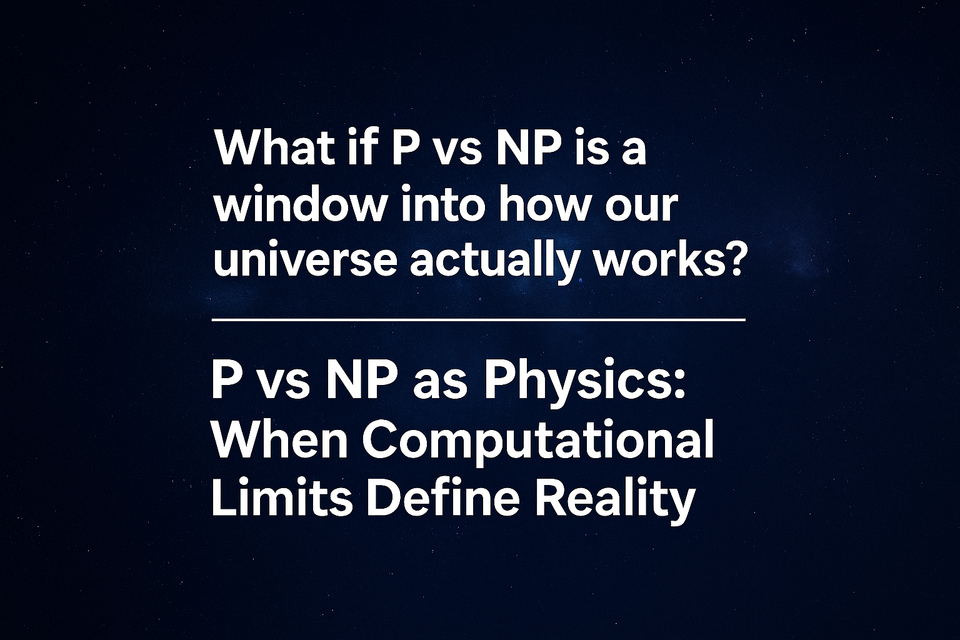P vs NP as Physics: When Computational Limits Define Reality

What if the greatest mystery in computer science—P versus NP—isn’t just math problem, but a window into how our universe actually works?
In conventional terms, P problems can be solved quickly (in polynomial time), while NP problems have solutions that are verifiable quickly but not necessarily discoverable quickly. For decades, computer scientists have debated whether P equals NP. In their conversation, Demis Hassabis reframes this as a fundamental physics question: the very structure of reality may determine which problems are inherently tractable and which lie forever beyond our computational reach.
Reimagining Complexity as Physical Law
Hassabis argues that if the universe is an informational system, then the boundary between P and NP reflects nature’s own “compression algorithms.” Just as physics laws condense countless interactions into a few elegant equations, a proof that P = NP would imply that many complex phenomena are secretly governed by hidden simplicity—patterns classical Turing machines can discover.
Evidence from AI Breakthroughs
Recent AI advances suggest that problems once thought intractable may admit efficient solutions:
- AlphaGo’s Move 37 navigated a search space larger than the number of atoms in the known universe by exploiting learned patterns rather than brute force.
- AlphaFold predicted protein structures—an NP–hard problem in principle—with remarkable accuracy in mere hours.
- Veo 3 models intuitive physics from video, bypassing traditional simulation complexity.
Each case hints that nature’s own “NP” problems may often reside in a special subset—what Hassabis dubs Learnable Natural Systems (LNS)—where evolutionary stability and informational structure render them tractable.
Physics, Computation, and the Limits of Knowledge
If P ≠ NP, vast domains of inquiry remain forever out of algorithmic reach, akin to regions of the cosmos we cannot observe. Conversely, if P = NP, then breakthroughs in algorithm design could unlock solutions to molecular design, cryptography, and climate modeling simultaneously.
Hassabis suggests exploring P versus NP not purely mathematically, but experimentally—using AI to probe whether classical architectures can systematically crack NP-class challenges drawn from physics, biology, and economics. Such research could reveal whether computational intractability is a human-imposed barrier or a universal constant.
Implications for Science and Society
- Drug Discovery: Proving P = NP would revolutionize in silico screening, turning months of combinatorial chemistry into instant predictions.
- Cryptography: Most encryption relies on P ≠ NP; overturning this assumption would demand entirely new security paradigms.
- Complex Systems: Climate, economics, and neuroscience models could shift from approximate heuristics to exact algorithmic forecasts.
A Call for Interdisciplinary Exploration
Hassabis urges collaboration between theoretical computer scientists, physicists, and AI researchers. By treating computational complexity as an empirical science, we may uncover new physical principles governing informational structure.
Questions to Ponder:
- Could training AI on diverse NP-hard problems reveal hidden algorithmic shortcuts?
- What would a physical experiment demonstrating P = NP look like?
- How might our understanding of free will, randomness, and determinism shift if computational limits prove mutable?
As we pursue AGI, the P versus NP debate becomes more than academic—it becomes a roadmap to understanding whether the universe’s deepest secrets are forever locked behind computational walls or accessible through algorithmic ingenuity.
